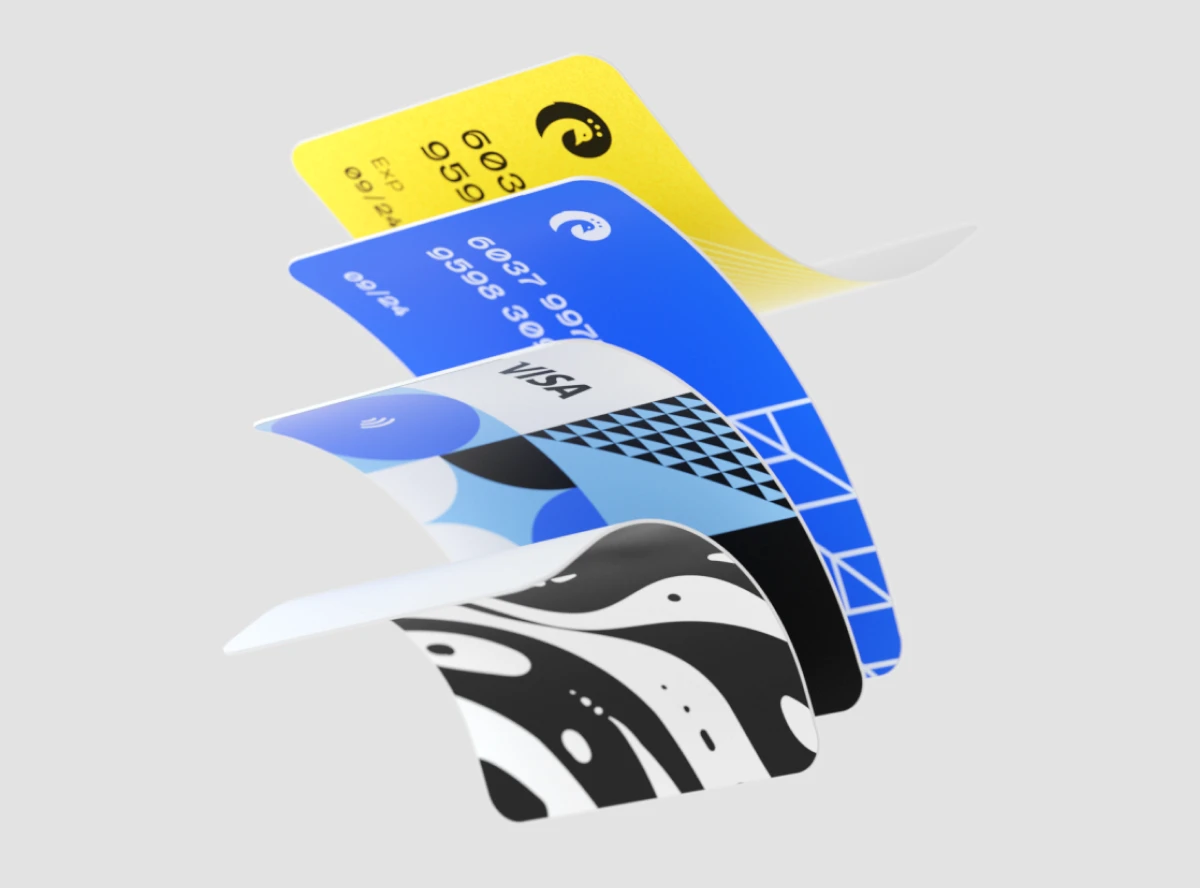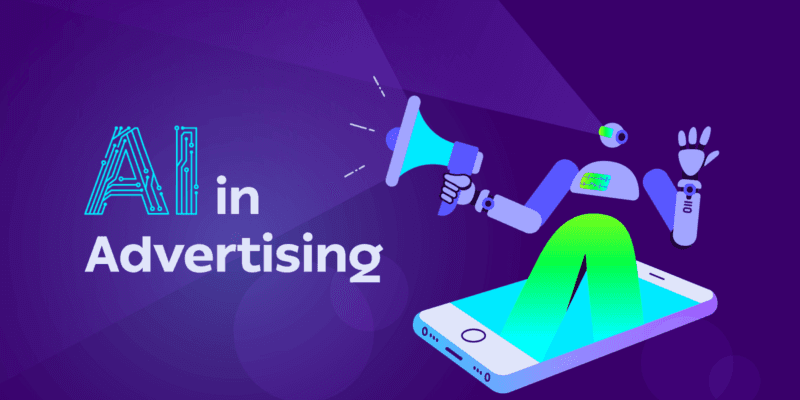The Significance of Full-Funnel Advertising
The Significance of Full-Funnel Advertising
The Significance of Full-Funnel Advertising
The Significance of Full-Funnel Advertising
Branding
/
Branding
/
Branding
/
Branding
/




Source:
In the dynamic world of marketing, full-funnel advertising has emerged as a dominant strategy, encompassing all phases of the customer journey, from initial brand discovery to final purchase and beyond. This comprehensive approach acknowledges that consumers navigate a complex web of touchpoints and channels, and that a well-orchestrated strategy is essential to effectively guide them through the buying process.
The significance of full-funnel advertising lies in its ability to cater to the evolving needs and motivations of consumers at each juncture of the funnel. At the outset, the objective is to cultivate brand awareness and spark interest in the product or service. This can be accomplished through various tactics, including social media campaigns, display advertising, and content marketing. A study conducted by Google revealed that full-funnel advertising can amplify brand awareness by up to 80%, a compelling statistic that underscores the effectiveness of this approach.
As consumers progress down the funnel, the focus transitions towards nurturing leads and fostering relationships. Content marketing, email marketing, and targeted advertising become instrumental tools at this stage. These tactics provide valuable information, address potential concerns, and establish trust with prospective customers. According to a report by Salesforce, nurtured leads convert at a rate 47% higher than non-nurtured leads, highlighting the power of nurturing efforts in driving conversions.
Reaching the bottom of the funnel necessitates a shift in focus towards converting leads into loyal customers. This is where persuasive advertising, retargeting campaigns, and personalized offers take center stage. These tactics aim to create a sense of urgency, emphasize the product's value proposition, and streamline the purchase process for consumers. A study by Adobe found that personalized experiences can elevate conversion rates by up to 20%, demonstrating the significant impact of personalization in influencing buying decisions.
Full-funnel advertising recognizes the enduring importance of post-purchase engagement as well. This involves cultivating customer loyalty, encouraging repeat purchases, and transforming customers into brand advocates. Tactics such as email marketing, loyalty programs, and customer feedback initiatives can all contribute to strengthening the bond between the brand and its customers. A study by Bain & Company found that a 5% increase in customer retention rates can translate into a 25% to 95% increase in profits, solidifying the importance of fostering long-term customer relationships.
One of the most compelling advantages of full-funnel advertising is its ability to optimize marketing spend by strategically allocating resources to the most relevant channels and tactics at each stage of the funnel. This targeted approach leads to a higher return on investment (ROI) compared to a more scattered approach. A study by McKinsey & Company revealed that companies that embrace a full-funnel marketing strategy can experience a 15-20% lift in marketing ROI, a significant benefit that can translate into substantial cost savings and increased marketing effectiveness.
Furthermore, full-funnel advertising furnishes marketers with invaluable insights into consumer behavior. By gleaning data on how customers interact with their brand across various channels and touchpoints, marketers can refine their marketing strategies, personalize messaging more effectively, and ultimately elevate the customer experience.
In today's fiercely competitive marketplace, full-funnel advertising has graduated from a mere strategic option to a fundamental necessity. By adopting a holistic approach that encompasses the entire customer journey, brands can craft a more cohesive and impactful marketing strategy that cultivates awareness, engagement, conversions, and lasting customer loyalty.
In the dynamic world of marketing, full-funnel advertising has emerged as a dominant strategy, encompassing all phases of the customer journey, from initial brand discovery to final purchase and beyond. This comprehensive approach acknowledges that consumers navigate a complex web of touchpoints and channels, and that a well-orchestrated strategy is essential to effectively guide them through the buying process.
The significance of full-funnel advertising lies in its ability to cater to the evolving needs and motivations of consumers at each juncture of the funnel. At the outset, the objective is to cultivate brand awareness and spark interest in the product or service. This can be accomplished through various tactics, including social media campaigns, display advertising, and content marketing. A study conducted by Google revealed that full-funnel advertising can amplify brand awareness by up to 80%, a compelling statistic that underscores the effectiveness of this approach.
As consumers progress down the funnel, the focus transitions towards nurturing leads and fostering relationships. Content marketing, email marketing, and targeted advertising become instrumental tools at this stage. These tactics provide valuable information, address potential concerns, and establish trust with prospective customers. According to a report by Salesforce, nurtured leads convert at a rate 47% higher than non-nurtured leads, highlighting the power of nurturing efforts in driving conversions.
Reaching the bottom of the funnel necessitates a shift in focus towards converting leads into loyal customers. This is where persuasive advertising, retargeting campaigns, and personalized offers take center stage. These tactics aim to create a sense of urgency, emphasize the product's value proposition, and streamline the purchase process for consumers. A study by Adobe found that personalized experiences can elevate conversion rates by up to 20%, demonstrating the significant impact of personalization in influencing buying decisions.
Full-funnel advertising recognizes the enduring importance of post-purchase engagement as well. This involves cultivating customer loyalty, encouraging repeat purchases, and transforming customers into brand advocates. Tactics such as email marketing, loyalty programs, and customer feedback initiatives can all contribute to strengthening the bond between the brand and its customers. A study by Bain & Company found that a 5% increase in customer retention rates can translate into a 25% to 95% increase in profits, solidifying the importance of fostering long-term customer relationships.
One of the most compelling advantages of full-funnel advertising is its ability to optimize marketing spend by strategically allocating resources to the most relevant channels and tactics at each stage of the funnel. This targeted approach leads to a higher return on investment (ROI) compared to a more scattered approach. A study by McKinsey & Company revealed that companies that embrace a full-funnel marketing strategy can experience a 15-20% lift in marketing ROI, a significant benefit that can translate into substantial cost savings and increased marketing effectiveness.
Furthermore, full-funnel advertising furnishes marketers with invaluable insights into consumer behavior. By gleaning data on how customers interact with their brand across various channels and touchpoints, marketers can refine their marketing strategies, personalize messaging more effectively, and ultimately elevate the customer experience.
In today's fiercely competitive marketplace, full-funnel advertising has graduated from a mere strategic option to a fundamental necessity. By adopting a holistic approach that encompasses the entire customer journey, brands can craft a more cohesive and impactful marketing strategy that cultivates awareness, engagement, conversions, and lasting customer loyalty.




What's Your Next Big Move?




What's Your Next Big Move?




What's Your Next Big Move?
What’s next?

Branding
/
Short-Form Video Ads: Mastering the Art of Capturing Attention in Seconds
In today’s fast-paced digital landscape, short-form video ads have emerged as a powerful tool for advertisers to capture audience attention quickly and effectively. Platforms like TikTok, Instagram Reels, and YouTube Shorts have revolutionized the way brands connect with their target audience, offering a unique opportunity to deliver impactful messages in just a matter of seconds.
The Rise of Short-Form Video Ads
Short-form video ads, typically ranging from 5 to 60 seconds, have gained immense popularity across various social media platforms. This trend is driven by several factors:
1. Decreasing attention spans: With the average attention span now shorter than ever, brief, engaging content is more likely to be watched in its entirety.
2. Mobile-first consumption: Short videos are perfectly suited for on-the-go viewing on smartphones, aligning with modern content consumption habits.
3. Algorithm preferences: Many social media platforms prioritize short-form content in their algorithms, increasing the potential reach for advertisers.
4. Cost-effectiveness: Short-form videos often require less production time and resources, making them an attractive option for businesses of all sizes.
Platform-Specific Trends
Each platform has its unique characteristics when it comes to short-form video ads:
TikTok
TikTok has become synonymous with short-form content, offering a highly engaging environment for advertisers:
• Videos under 15 seconds achieve a view rate of 9.40% on average.
• The platform’s algorithm favors authentic, creative content over highly polished productions.
Instagram Reels
Instagram has embraced short-form video with Reels, providing advertisers with new opportunities:
• Reels allow for videos up to 60 seconds long, with an average session time of 53 minutes.
• The integration with Instagram’s existing features makes it easy for brands to incorporate Reels into their overall strategy.
YouTube Shorts
YouTube’s entry into the short-form video space offers unique advantages:
• Shorts benefit from YouTube’s massive user base and established infrastructure.
• The platform’s reputation for longer-form content allows for creative storytelling techniques within the short format.
Tips for Creating Engaging Short-Form Video Ads
To make the most of this format, consider the following best practices:
1. Hook viewers immediately: Capture attention within the first 3 seconds using striking visuals, intriguing questions, or surprising statements.
2. Keep it concise: Aim for videos under 60 seconds to ensure high viewer retention.
3. Embrace authenticity: Raw, genuine content often performs better than overly polished productions.
4. Leverage trends: Stay current with popular sounds, challenges, and visual styles on each platform.
5. Optimize for sound-off viewing: Use captions and visual storytelling to convey your message effectively, even when viewers have their sound muted.
6. Include a clear call-to-action: Guide viewers on what to do next, whether it’s visiting your website or trying your product.
7. Use high-quality visuals: Ensure your video is visually appealing and stands out in crowded feeds.
8. Test and iterate: Experiment with different video lengths, styles, and content to find what resonates best with your audience.
Why Advertisers Are Embracing Short-Form Video Ads
The growing popularity of short-form video ads among advertisers can be attributed to several factors:
1. Higher engagement rates: Short-form videos receive 2.5 times more engagement than long-form videos.
2. Improved brand awareness: 73% of consumers prefer short-form videos when searching for new products or services.
3. Viral potential: 47% of marketers say short-form videos are more likely to go viral compared to other content formats.
4. Versatility: Short-form videos can be easily repurposed across multiple platforms, maximizing reach and ROI.
5. Appeal to younger demographics: 57% of Gen Z prefer short videos for product research.
The Future of Short-Form Video Advertising
As we look ahead to 2025 and beyond, short-form video ads are poised to play an even more significant role in digital advertising strategies. With advancements in AI and machine learning, we can expect more personalized and targeted short-form video ads that resonate with specific audience segments.
Moreover, the integration of augmented reality (AR) and virtual reality (VR) technologies into short-form video ads promises to create more immersive and interactive experiences for viewers.
In conclusion, mastering the art of short-form video ads is becoming increasingly crucial for advertisers looking to capture attention in today’s digital age. By understanding platform-specific trends, implementing best practices, and staying ahead of technological advancements, brands can leverage this powerful format to connect with their audience effectively and drive meaningful results.

Branding
/
Short-Form Video Ads: Mastering the Art of Capturing Attention in Seconds
In today’s fast-paced digital landscape, short-form video ads have emerged as a powerful tool for advertisers to capture audience attention quickly and effectively. Platforms like TikTok, Instagram Reels, and YouTube Shorts have revolutionized the way brands connect with their target audience, offering a unique opportunity to deliver impactful messages in just a matter of seconds.
The Rise of Short-Form Video Ads
Short-form video ads, typically ranging from 5 to 60 seconds, have gained immense popularity across various social media platforms. This trend is driven by several factors:
1. Decreasing attention spans: With the average attention span now shorter than ever, brief, engaging content is more likely to be watched in its entirety.
2. Mobile-first consumption: Short videos are perfectly suited for on-the-go viewing on smartphones, aligning with modern content consumption habits.
3. Algorithm preferences: Many social media platforms prioritize short-form content in their algorithms, increasing the potential reach for advertisers.
4. Cost-effectiveness: Short-form videos often require less production time and resources, making them an attractive option for businesses of all sizes.
Platform-Specific Trends
Each platform has its unique characteristics when it comes to short-form video ads:
TikTok
TikTok has become synonymous with short-form content, offering a highly engaging environment for advertisers:
• Videos under 15 seconds achieve a view rate of 9.40% on average.
• The platform’s algorithm favors authentic, creative content over highly polished productions.
Instagram Reels
Instagram has embraced short-form video with Reels, providing advertisers with new opportunities:
• Reels allow for videos up to 60 seconds long, with an average session time of 53 minutes.
• The integration with Instagram’s existing features makes it easy for brands to incorporate Reels into their overall strategy.
YouTube Shorts
YouTube’s entry into the short-form video space offers unique advantages:
• Shorts benefit from YouTube’s massive user base and established infrastructure.
• The platform’s reputation for longer-form content allows for creative storytelling techniques within the short format.
Tips for Creating Engaging Short-Form Video Ads
To make the most of this format, consider the following best practices:
1. Hook viewers immediately: Capture attention within the first 3 seconds using striking visuals, intriguing questions, or surprising statements.
2. Keep it concise: Aim for videos under 60 seconds to ensure high viewer retention.
3. Embrace authenticity: Raw, genuine content often performs better than overly polished productions.
4. Leverage trends: Stay current with popular sounds, challenges, and visual styles on each platform.
5. Optimize for sound-off viewing: Use captions and visual storytelling to convey your message effectively, even when viewers have their sound muted.
6. Include a clear call-to-action: Guide viewers on what to do next, whether it’s visiting your website or trying your product.
7. Use high-quality visuals: Ensure your video is visually appealing and stands out in crowded feeds.
8. Test and iterate: Experiment with different video lengths, styles, and content to find what resonates best with your audience.
Why Advertisers Are Embracing Short-Form Video Ads
The growing popularity of short-form video ads among advertisers can be attributed to several factors:
1. Higher engagement rates: Short-form videos receive 2.5 times more engagement than long-form videos.
2. Improved brand awareness: 73% of consumers prefer short-form videos when searching for new products or services.
3. Viral potential: 47% of marketers say short-form videos are more likely to go viral compared to other content formats.
4. Versatility: Short-form videos can be easily repurposed across multiple platforms, maximizing reach and ROI.
5. Appeal to younger demographics: 57% of Gen Z prefer short videos for product research.
The Future of Short-Form Video Advertising
As we look ahead to 2025 and beyond, short-form video ads are poised to play an even more significant role in digital advertising strategies. With advancements in AI and machine learning, we can expect more personalized and targeted short-form video ads that resonate with specific audience segments.
Moreover, the integration of augmented reality (AR) and virtual reality (VR) technologies into short-form video ads promises to create more immersive and interactive experiences for viewers.
In conclusion, mastering the art of short-form video ads is becoming increasingly crucial for advertisers looking to capture attention in today’s digital age. By understanding platform-specific trends, implementing best practices, and staying ahead of technological advancements, brands can leverage this powerful format to connect with their audience effectively and drive meaningful results.

Branding
/
Short-Form Video Ads: Mastering the Art of Capturing Attention in Seconds
In today’s fast-paced digital landscape, short-form video ads have emerged as a powerful tool for advertisers to capture audience attention quickly and effectively. Platforms like TikTok, Instagram Reels, and YouTube Shorts have revolutionized the way brands connect with their target audience, offering a unique opportunity to deliver impactful messages in just a matter of seconds.
The Rise of Short-Form Video Ads
Short-form video ads, typically ranging from 5 to 60 seconds, have gained immense popularity across various social media platforms. This trend is driven by several factors:
1. Decreasing attention spans: With the average attention span now shorter than ever, brief, engaging content is more likely to be watched in its entirety.
2. Mobile-first consumption: Short videos are perfectly suited for on-the-go viewing on smartphones, aligning with modern content consumption habits.
3. Algorithm preferences: Many social media platforms prioritize short-form content in their algorithms, increasing the potential reach for advertisers.
4. Cost-effectiveness: Short-form videos often require less production time and resources, making them an attractive option for businesses of all sizes.
Platform-Specific Trends
Each platform has its unique characteristics when it comes to short-form video ads:
TikTok
TikTok has become synonymous with short-form content, offering a highly engaging environment for advertisers:
• Videos under 15 seconds achieve a view rate of 9.40% on average.
• The platform’s algorithm favors authentic, creative content over highly polished productions.
Instagram Reels
Instagram has embraced short-form video with Reels, providing advertisers with new opportunities:
• Reels allow for videos up to 60 seconds long, with an average session time of 53 minutes.
• The integration with Instagram’s existing features makes it easy for brands to incorporate Reels into their overall strategy.
YouTube Shorts
YouTube’s entry into the short-form video space offers unique advantages:
• Shorts benefit from YouTube’s massive user base and established infrastructure.
• The platform’s reputation for longer-form content allows for creative storytelling techniques within the short format.
Tips for Creating Engaging Short-Form Video Ads
To make the most of this format, consider the following best practices:
1. Hook viewers immediately: Capture attention within the first 3 seconds using striking visuals, intriguing questions, or surprising statements.
2. Keep it concise: Aim for videos under 60 seconds to ensure high viewer retention.
3. Embrace authenticity: Raw, genuine content often performs better than overly polished productions.
4. Leverage trends: Stay current with popular sounds, challenges, and visual styles on each platform.
5. Optimize for sound-off viewing: Use captions and visual storytelling to convey your message effectively, even when viewers have their sound muted.
6. Include a clear call-to-action: Guide viewers on what to do next, whether it’s visiting your website or trying your product.
7. Use high-quality visuals: Ensure your video is visually appealing and stands out in crowded feeds.
8. Test and iterate: Experiment with different video lengths, styles, and content to find what resonates best with your audience.
Why Advertisers Are Embracing Short-Form Video Ads
The growing popularity of short-form video ads among advertisers can be attributed to several factors:
1. Higher engagement rates: Short-form videos receive 2.5 times more engagement than long-form videos.
2. Improved brand awareness: 73% of consumers prefer short-form videos when searching for new products or services.
3. Viral potential: 47% of marketers say short-form videos are more likely to go viral compared to other content formats.
4. Versatility: Short-form videos can be easily repurposed across multiple platforms, maximizing reach and ROI.
5. Appeal to younger demographics: 57% of Gen Z prefer short videos for product research.
The Future of Short-Form Video Advertising
As we look ahead to 2025 and beyond, short-form video ads are poised to play an even more significant role in digital advertising strategies. With advancements in AI and machine learning, we can expect more personalized and targeted short-form video ads that resonate with specific audience segments.
Moreover, the integration of augmented reality (AR) and virtual reality (VR) technologies into short-form video ads promises to create more immersive and interactive experiences for viewers.
In conclusion, mastering the art of short-form video ads is becoming increasingly crucial for advertisers looking to capture attention in today’s digital age. By understanding platform-specific trends, implementing best practices, and staying ahead of technological advancements, brands can leverage this powerful format to connect with their audience effectively and drive meaningful results.

Branding
/
The Rise of AI in Advertising: How Machine Learning is Revolutionizing Ad Campaigns
Artificial Intelligence (AI) is no longer a futuristic concept in advertising—it’s here, and it’s transforming the industry at breakneck speed. From automated programmatic advertising to hyper-personalized content creation, AI is reshaping how brands connect with their audiences.
The AI Revolution in Advertising
Machine learning algorithms are now capable of analyzing vast amounts of data to predict consumer behavior, optimize ad placements, and even generate creative content. This shift is enabling advertisers to create more targeted, efficient, and effective campaigns than ever before.
Key Areas Where AI is Making an Impact
1. Programmatic Advertising: AI-driven programmatic platforms can now make real-time decisions about ad placements, ensuring that ads reach the right audience at the right time and on the right device.
2. Predictive Analytics: Machine learning models can forecast consumer trends and behaviors, allowing advertisers to stay ahead of the curve and tailor their strategies accordingly.
3. Dynamic Creative Optimization: AI can automatically adjust ad creative elements based on user data, ensuring that each viewer sees the most relevant version of an ad.
4. Chatbots and Virtual Assistants: AI-powered conversational interfaces are providing personalized customer experiences and gathering valuable data for advertisers.
Real-World Success Stories
Several brands have already seen significant success with AI-driven advertising:
• Netflix: Uses machine learning to personalize thumbnail images for shows and movies, increasing viewer engagement.
• Coca-Cola: Employed AI to analyze data from self-service soft drink fountains to create new flavor combinations.
• Alibaba: Developed an AI copywriter that can generate thousands of ads per second, used by merchants on its e-commerce platforms.
The Future of AI in Advertising
As AI technology continues to advance, we can expect even more innovative applications in advertising. From AI-generated influencers to predictive product development, the possibilities are endless.
However, it’s crucial to remember that while AI is a powerful tool, human creativity and strategic thinking remain irreplaceable. The most successful advertisers will be those who can effectively combine AI’s analytical power with human insight and creativity.
In conclusion, AI is not just changing the advertising landscape—it’s redefining it. As we move forward, embracing and adapting to these technological advancements will be key to staying competitive in the ever-evolving world of advertising.

Branding
/
The Rise of AI in Advertising: How Machine Learning is Revolutionizing Ad Campaigns
Artificial Intelligence (AI) is no longer a futuristic concept in advertising—it’s here, and it’s transforming the industry at breakneck speed. From automated programmatic advertising to hyper-personalized content creation, AI is reshaping how brands connect with their audiences.
The AI Revolution in Advertising
Machine learning algorithms are now capable of analyzing vast amounts of data to predict consumer behavior, optimize ad placements, and even generate creative content. This shift is enabling advertisers to create more targeted, efficient, and effective campaigns than ever before.
Key Areas Where AI is Making an Impact
1. Programmatic Advertising: AI-driven programmatic platforms can now make real-time decisions about ad placements, ensuring that ads reach the right audience at the right time and on the right device.
2. Predictive Analytics: Machine learning models can forecast consumer trends and behaviors, allowing advertisers to stay ahead of the curve and tailor their strategies accordingly.
3. Dynamic Creative Optimization: AI can automatically adjust ad creative elements based on user data, ensuring that each viewer sees the most relevant version of an ad.
4. Chatbots and Virtual Assistants: AI-powered conversational interfaces are providing personalized customer experiences and gathering valuable data for advertisers.
Real-World Success Stories
Several brands have already seen significant success with AI-driven advertising:
• Netflix: Uses machine learning to personalize thumbnail images for shows and movies, increasing viewer engagement.
• Coca-Cola: Employed AI to analyze data from self-service soft drink fountains to create new flavor combinations.
• Alibaba: Developed an AI copywriter that can generate thousands of ads per second, used by merchants on its e-commerce platforms.
The Future of AI in Advertising
As AI technology continues to advance, we can expect even more innovative applications in advertising. From AI-generated influencers to predictive product development, the possibilities are endless.
However, it’s crucial to remember that while AI is a powerful tool, human creativity and strategic thinking remain irreplaceable. The most successful advertisers will be those who can effectively combine AI’s analytical power with human insight and creativity.
In conclusion, AI is not just changing the advertising landscape—it’s redefining it. As we move forward, embracing and adapting to these technological advancements will be key to staying competitive in the ever-evolving world of advertising.

Branding
/
The Rise of AI in Advertising: How Machine Learning is Revolutionizing Ad Campaigns
Artificial Intelligence (AI) is no longer a futuristic concept in advertising—it’s here, and it’s transforming the industry at breakneck speed. From automated programmatic advertising to hyper-personalized content creation, AI is reshaping how brands connect with their audiences.
The AI Revolution in Advertising
Machine learning algorithms are now capable of analyzing vast amounts of data to predict consumer behavior, optimize ad placements, and even generate creative content. This shift is enabling advertisers to create more targeted, efficient, and effective campaigns than ever before.
Key Areas Where AI is Making an Impact
1. Programmatic Advertising: AI-driven programmatic platforms can now make real-time decisions about ad placements, ensuring that ads reach the right audience at the right time and on the right device.
2. Predictive Analytics: Machine learning models can forecast consumer trends and behaviors, allowing advertisers to stay ahead of the curve and tailor their strategies accordingly.
3. Dynamic Creative Optimization: AI can automatically adjust ad creative elements based on user data, ensuring that each viewer sees the most relevant version of an ad.
4. Chatbots and Virtual Assistants: AI-powered conversational interfaces are providing personalized customer experiences and gathering valuable data for advertisers.
Real-World Success Stories
Several brands have already seen significant success with AI-driven advertising:
• Netflix: Uses machine learning to personalize thumbnail images for shows and movies, increasing viewer engagement.
• Coca-Cola: Employed AI to analyze data from self-service soft drink fountains to create new flavor combinations.
• Alibaba: Developed an AI copywriter that can generate thousands of ads per second, used by merchants on its e-commerce platforms.
The Future of AI in Advertising
As AI technology continues to advance, we can expect even more innovative applications in advertising. From AI-generated influencers to predictive product development, the possibilities are endless.
However, it’s crucial to remember that while AI is a powerful tool, human creativity and strategic thinking remain irreplaceable. The most successful advertisers will be those who can effectively combine AI’s analytical power with human insight and creativity.
In conclusion, AI is not just changing the advertising landscape—it’s redefining it. As we move forward, embracing and adapting to these technological advancements will be key to staying competitive in the ever-evolving world of advertising.
